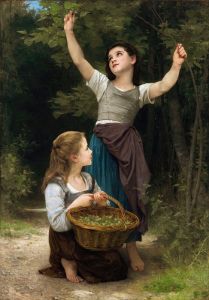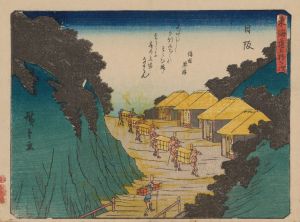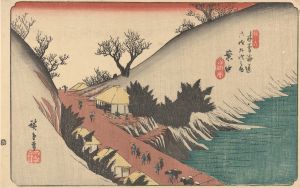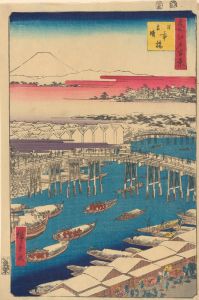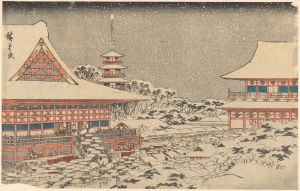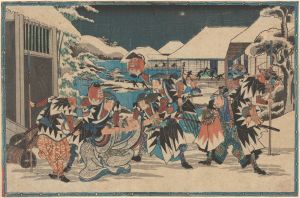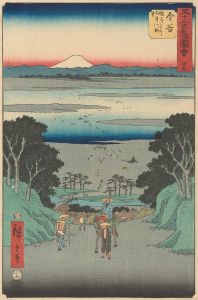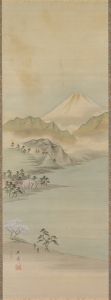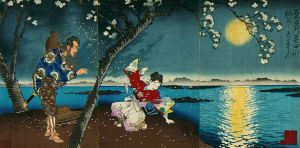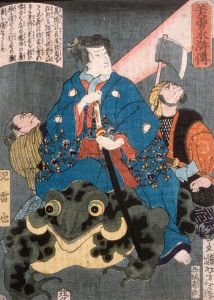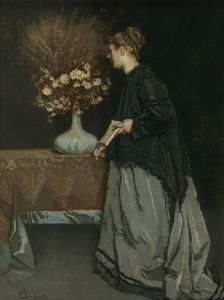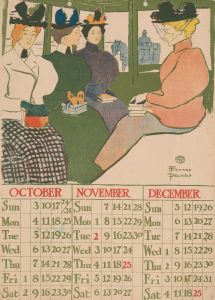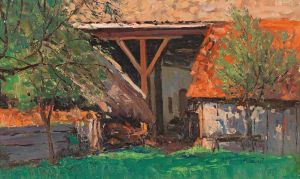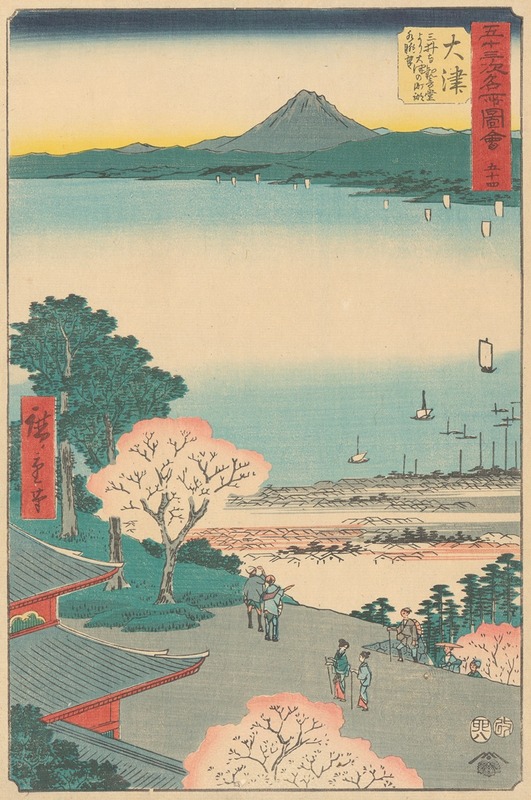
Otsu
A hand-painted replica of Andō Hiroshige’s masterpiece Otsu, meticulously crafted by professional artists to capture the true essence of the original. Each piece is created with museum-quality canvas and rare mineral pigments, carefully painted by experienced artists with delicate brushstrokes and rich, layered colors to perfectly recreate the texture of the original artwork. Unlike machine-printed reproductions, this hand-painted version brings the painting to life, infused with the artist’s emotions and skill in every stroke. Whether for personal collection or home decoration, it instantly elevates the artistic atmosphere of any space.
Andō Hiroshige, a renowned Japanese ukiyo-e artist of the Edo period, is celebrated for his landscape prints and depictions of everyday life. One of his notable works is "Otsu," which is part of his famous series "The Fifty-three Stations of the Tōkaidō." This series, created in the early 1830s, captures the scenic beauty and cultural significance of the Tōkaidō road, a vital route connecting Edo (modern-day Tokyo) to Kyoto.
"Otsu" is the last station on the Tōkaidō before reaching Kyoto, and Hiroshige's depiction of this location is a testament to his keen observation and artistic skill. The print illustrates the bustling activity of travelers and locals in Otsu, a town known for its strategic position near Lake Biwa, Japan's largest freshwater lake. This location was historically significant as a transportation hub and a place of rest for travelers journeying between the two major cities.
Hiroshige's work is characterized by its use of vibrant colors, attention to detail, and ability to convey the atmosphere of a scene. In "Otsu," he employs these techniques to depict the lively interactions among people and the natural beauty surrounding them. The composition often includes elements such as boats on Lake Biwa, travelers on the road, and the distant mountains, all harmoniously integrated to create a sense of movement and life.
The "Fifty-three Stations of the Tōkaidō" series was highly influential in popularizing the ukiyo-e genre and contributed to Hiroshige's reputation as one of the leading artists of his time. His ability to capture the essence of a place and its people resonated with both contemporary audiences and later generations, influencing Western artists such as Vincent van Gogh and Claude Monet.
Hiroshige's "Otsu" not only serves as an artistic representation of a specific location but also provides insight into the cultural and social dynamics of the Edo period. The print reflects the importance of travel and commerce in Japan during this time, as well as the interconnectedness of different regions through the Tōkaidō road.
In addition to its historical and cultural significance, "Otsu" exemplifies Hiroshige's mastery of the ukiyo-e technique. His use of perspective, color gradation, and intricate line work demonstrates his skill in creating depth and atmosphere within a relatively small format. This attention to detail and composition is a hallmark of Hiroshige's work and contributes to the enduring appeal of his prints.
Overall, Andō Hiroshige's "Otsu" is a remarkable example of Japanese woodblock printing that captures the essence of a vibrant and historically significant location. Through his artistry, Hiroshige offers a window into the past, allowing viewers to experience the beauty and vitality of the Edo period's travel culture.





